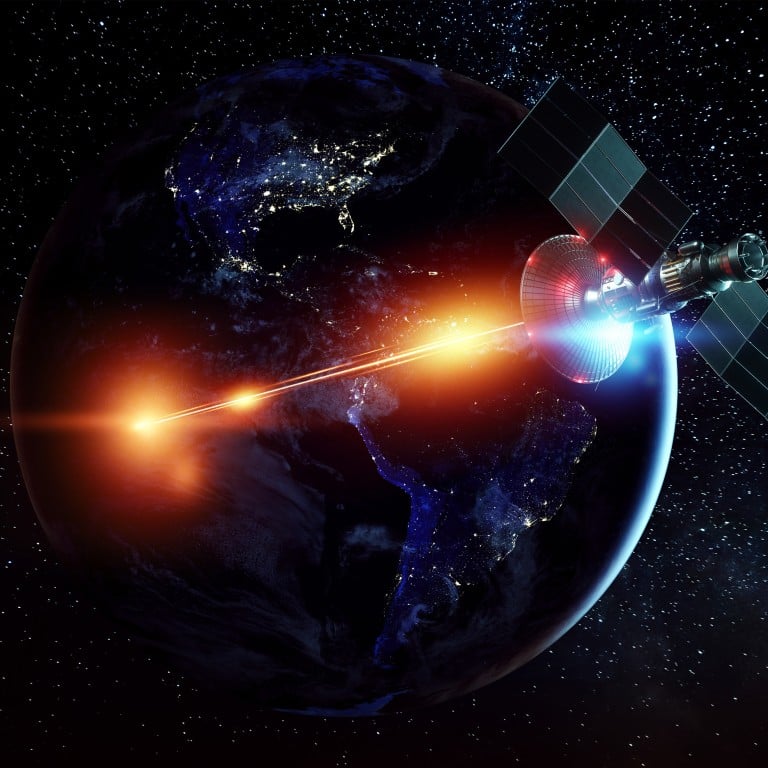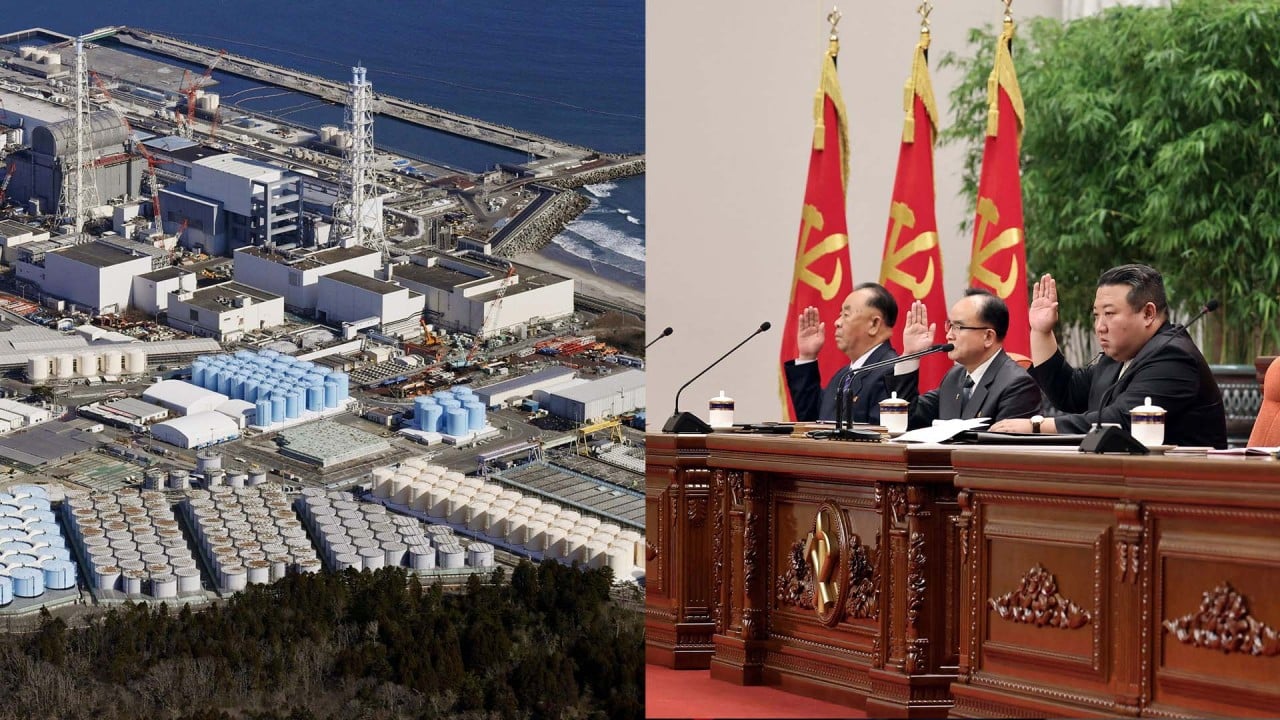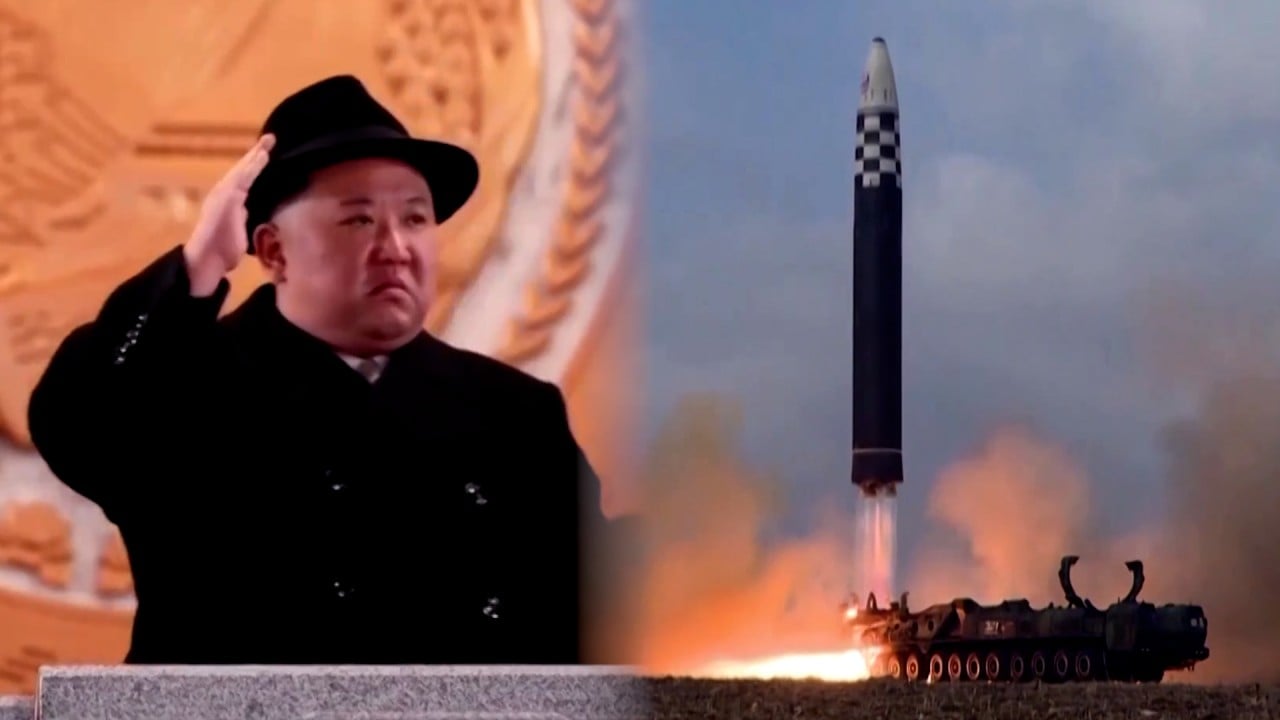
China’s hypersonic tungsten rod experiment challenges the US ‘rods from God’ space weapon concept
- A scientific experiment has suggested a kinetic energy space weapon may not work as an effective bunker buster as previously thought
- The idea for a ‘rods from God’ hypersonic weapon was first conceived by the US military during the Cold War
The team, led by mechanical and electrical engineering scientist Fu Jianping with the university’s intelligent weapon research institute, accelerated tungsten rods to extreme velocities up to 3km per second (1.86 miles per second), or nearly nine times the speed of sound.
Tungsten is very dense and hard, and has the highest melting point of all metals. These properties make it an excellent material for use in kinetic energy weapons that kill with velocity and mass.
When a tungsten rod projectile hits a military concrete target at an extremely high speed, it generates a high-pressure shock wave that compresses and heats the target material to very high temperatures and pressures. This causes the target to transition from a solid to a plasma state, where the electrons are stripped from the atoms and the material becomes ionised, according to Fu’s team.
The plasma state of the target material is highly conductive to electrical currents generated by the high-pressure shock wave. These electrical currents can then create a magnetic field that interacts with the plasma, generating a force that accelerates the plasma to even higher velocities.
This accelerated plasma forms a plasma jet that erodes the target material and contributes to the penetration process. However, the plasma jet also interacts with the tungsten rod, causing it to erode due to the high-temperature and high-pressure conditions, according to the experiment.
The remaining mass of the tungsten rod is reduced significantly during the process. At Mach 8, Fu’s team found an entire arms-length rod can vanish almost instantly after impact.
“It is very necessary to study the penetration of tungsten rods into concrete at hypersonic speeds,” Fu and his colleagues wrote in the paper.
“With the development of launch platform technology, the speed of rod-type projectiles is increasing. However, the destructive effects of tungsten rods against concrete vary between hypersonic and conventional speeds. The destructive mechanism also changes accordingly,” the paper said.
Chinese develop purest, strongest tungsten material for extreme uses
“The penetration effect of kinetic energy projectiles on concrete has always been a research focus for a number of countries.”
The university is closely linked to China’s space defence programme, according to openly available information.
The idea was to drop a 6 metre (19.7 feet) tungsten rod from orbit to strike targets on Earth – achieving the force of a nuclear weapon without the radioactive fallout.
In 2003, a United States Air Force report introduced a new system called Hypervelocity Rod Bundles (HRB). This system consisted of tungsten rods that were 6.1 metres long and 0.3 metres in diameter. These rods were intended to be launched from space using a conventional rocket or other launch system, and steered to their target using a variety of guidance systems.
The HRB has the ability to strike targets globally with speeds of around 3km per second at impact. By deploying six to eight satellites on a given orbit, the system could strike a target within 12-15 minutes, according to some calculations. That is less than half the time it takes for an ICBM to reach its target – and without the warning of a launch.
Some researchers said that a large “rod from God” could have the yield of a small tactical nuclear bomb, and they could also be effective against nuclear bunkers.

But these systems were never implemented. One major reason was that the development and deployment of these weapons in space would have required a significant investment of time, money and resources, such as superheavy rockets.
Another factor was the development of other weapons systems, such as precision-guided munitions and cruise missiles, which were seen as more practical and effective for many military applications.
Then there would be political and strategic considerations. A misfire, for instance, could cause a disaster. The deployment of such a system could be seen as provocative or destabilising by other nations.
But China has taken the US military blueprints seriously. In a paper published in 2018, Chinese scientists reported a prototype experiment involving a hypervelocity kinetic energy projectile hitting a ground target in the Gobi Desert.
In the unprecedented experiment, a 140kg (308lbs) tungsten rod was fired at a speed of 4.6km per second by a classified platform from high above the desert, resulting in a parabolic-shaped impact crater with a depth of 3 metres and a diameter of 4.6 metres. The tungsten rod had a diameter of 11cm (4.33 inches) and a length of 84cm. The target area was sand and gravel.
It is possible that this experiment was intended to simulate the effects of a Project Thor or HRB-type weapon, according to some researchers, as the tungsten rod used in the experiment was similar in composition to those proposed for such systems.
But the Gobi experiment raised some questions about the effectiveness of the weapon when being used against a target hidden under the desert.
Beijing can’t make North Korea ‘denuclearise’, Mr Blinken
The data collected by Chinese scientists from the site suggested that the hypervelocity impact cratering effect was similar to that of a shallow-buried underground explosion, and that as the velocity increases, the effect becomes more like that of a surface-contact explosion.
This means that a “rod from God” could have limited ground-penetrating capabilities.
The natural ground in the Gobi Desert is different from reinforced concrete bunkers, which are typically designed to withstand high-velocity impacts and other forms of damage.
In its study, Fu’s team investigated how the depth of penetration of tungsten rods into concrete targets changed with the velocity of the projectile.
The results showed that depth initially increased with the velocity of the projectile, but then decreased after reaching a certain point.
“There is a maximum penetration depth of about 80 times that of the projectile diameter at the speed of 1.2km per second [about 3.5 times the speed of sound],” Fu’s team said.
Pushing the speed higher to hypersonic range, or above Mach 5, would not help the tungsten rod go any deeper into the concrete.
“The penetration depth under ultra-high speed conditions has no advantages over medium and low-speed penetration,” the team said.
At Mach 8, for instance, the entire rod would be turned into a plasma jet on impact, and the jet could only result in a penetration depth of about 50 times that of the rod diameter.
But that is just one of the factors to take into consideration when measuring the destructive power of a kinetic energy weapon such as a tungsten rod.
Other factors include the kinetic energy of the projectile, the velocity of the projectile, the mass of the projectile and the material properties of the target.
Surface explosions can also cause a wide range of damage, including structural damage to buildings and other infrastructure, injuries and fatalities to people and animals, and environmental damage.
Some military scientists say that the development of new launch technologies, such as hypersonic vehicles and rail guns, could increase the potential application of tungsten rods as a kinetic energy weapon.
Rail guns use electromagnetic forces to accelerate projectiles to extremely high velocities and hit targets 200km away at Mach 7.
Meanwhile hypersonic missiles, which can travel at speeds of Mach 5 or higher, provide another possible platform for tungsten rods to be launched from near-space altitudes.
China is the world’s largest producer of tungsten, accounting for over 80 per cent of global production. The second largest producer is Russia.
The United States is a significant consumer of tungsten, but it is not a major producer. The US military is heavily dependent on imports to meet its tungsten needs, with most of its supply coming from China.



